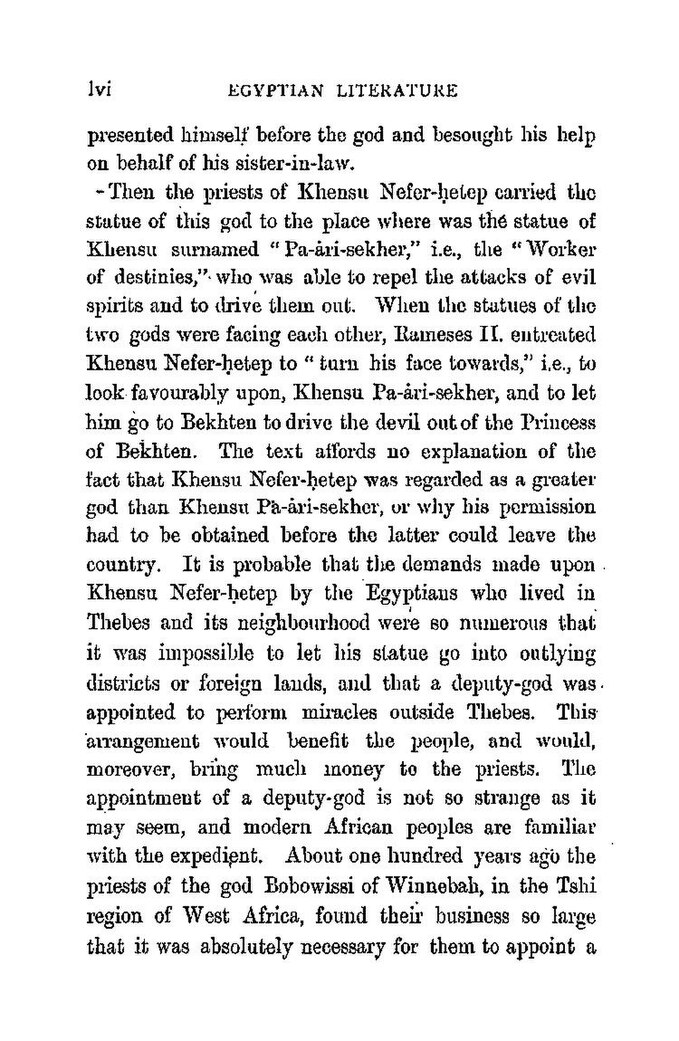presented himself before the god and besought his help on behalf of his sister-in-law.
Then the priests of Khensu Nefer-ḥetep carried the statue of this god to the place where was the statue of Khensu surnamed “Pa-ȧri-sekher," i.e., the "Worker of destinies,” who was able to repel the attacks of evil spirits and to drive them out. When the statues of the two gods were facing each other, Rameses II. entreated Khensu Nefer-ḥetep to “turn his face towards,” i.e., to look favourably upon, Khensu Pa-ȧri-sekher, and to let him go to Bekhten to drive the devil out of the Princess of Bekhten. The text atfords no explanation of the fact that Khensu Nefer-ḥetep was regarded as a greater god than Khensu Pa-ȧri-sekher, or why his permission had to be obtained before the latter could leave the country. It is probable that the demands made upon Khensu Kefer-ḥetep by the Egyptians who lived in Thebes and its neighbourhood were so numerous that it was impossible to let his statue go into outlying districts or foreign lands, and that a deputy-god was appointed to perform miracles outside Thebes. This arrangement would benefit the people, and would, moreover, bring much money to the priests. The appointment of a deputy-god is not so strange as it may seem, and modern African peoples are familiar with the expedient. About one hundred years ago the priests of the god Bobowissi of Winnebah, in the Tshi region of West Africa, found their business so large that it was absolutely necessary for them to appoint a
